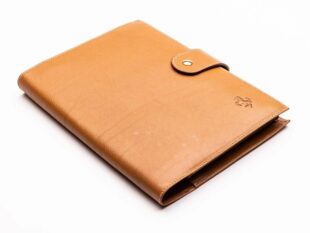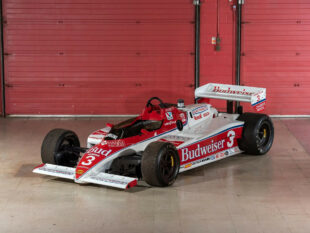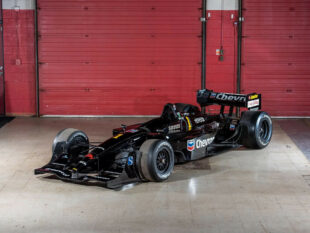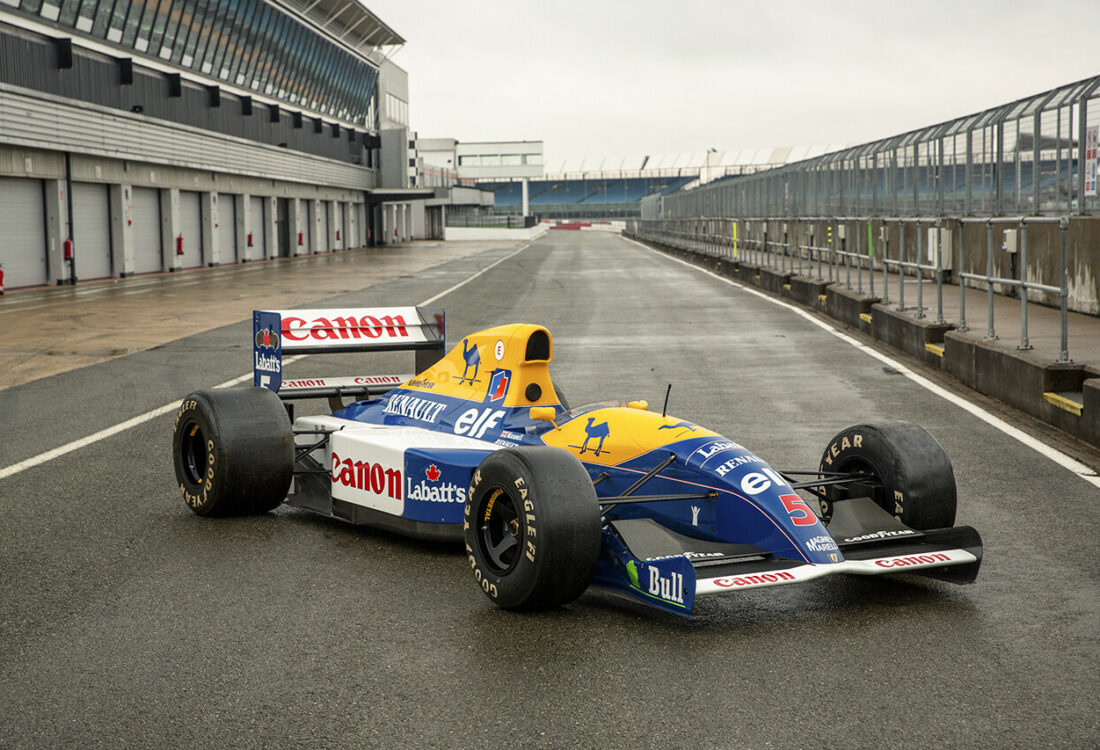
WILLIAMS FW14
Les services + de Classic Racing
Bientôt disponible

Bientôt disponible
A votre service depuis 1995, Transfret c’est avant tout le respect des collaborateurs et des clients.
Pour transporter de 1 à 6 voitures partout en Europe, contactez nous sur www.groupe-transfret.com
– Proposé à la vente dans le cadre de la collection Nigel Mansell
– La Formule 1 qui a donné un coup de pouce à Ayrton Senna au Grand Prix de Grande-Bretagne
– Conduite cinq fois à la victoire par Nigel Mansell lors de la saison 1991
– Offert à Nigel Mansell après la fin de la saison 1991 ; conservée dans la collection personnelle de l’ancien champion du monde depuis
– Considérée comme l’une des voitures de Formule 1 les plus avancées techniquement de son époque
– Conserve sa livrée emblématique Canon Williams Team
Lorsque Nigel Mansell a choisi de rejoindre Williams après deux années tumultueuses à la Scuderia Ferrari, peu de gens auraient pu prédire la fin palpitante de sa longue carrière, finalement couronnée de succès en Formule 1. Après avoir frôlé la victoire au championnat des pilotes à deux reprises avec Williams – terminant 2e au classement général au cours des années successives en 1986 et 1987, une fois derrière Alain Prost et dernièrement derrière son coéquipier, Nelson Piquet – Mansell a maintenu l’ambition de décrocher le titre pour lui-même, ce qui fut réalisé au volant d’une Williams en 1992.
Bien que Mansell ait été le dernier pilote personnellement recruté par Enzo Ferrari pour courir pour son équipe, l’Anglais a rompu ses liens avec l’équipe la plus titrée de Formule 1 pour forcer son retour chez Williams. Sa première saison chez Ferrari a connu un succès mitigé, se familiarisant avec la boîte de vitesses semi-automatique nouvellement introduite dans la Ferrari 640 pour remporter deux victoires en course et terminer 4e au classement général des pilotes. Mansell considérait la saison comme une saison de développement, plaçant ses espoirs dans le championnat pour l’année suivante. Cette année-là s’avérerait également difficile pour Mansell, qui souffrait de problèmes de fiabilité dans sa Ferrari.
Les tensions ont culminé au Grand Prix de Grande-Bretagne 1990, où Mansell a découvert que les mécaniciens avaient échangé sa voiture avec celle d’Alain Prost à la demande du Français. Cela s’est avéré trop, et Mansell a annoncé qu’il se retirerait de la Formule 1 après la course. Frank Williams a saisi l’opportunité de signer avec Mansell, et le pilote est retourné dans l’équipe qu’il avait représentée entre 1985 et 1988. Williams a convenu que Mansell serait leur pilote principal et a réussi à persuader l’Anglais de renoncer à sa retraite. Mansell a signé avec Williams le 1er octobre 1990.
Williams et le fournisseur de moteurs Renault ont cherché à améliorer les résultats des voitures FW13 et FW13B précédentes, qui avaient sous-performé au cours des saisons 1989 et 1990 respectives. Avec un objectif en tête, Adrian Newey a été embauché par Williams en 1990, après avoir travaillé pour March Engineering. Après avoir prospéré chez March, Newey a pu faire progresser l’aérodynamisme de la nouvelle voiture Williams et le produit fini, baptisé Williams FW14, était “tout nouveau”, à l’exception de son moteur Renault V10 de 3,5 litres. Elle était considérée comme l’une des voitures les plus sophistiquées et technologiquement avancées de la Formule 1. Accouplée au groupe motopropulseur Renault de 700 chevaux, une boîte de vitesses semi-automatique séquentielle à six rapports Williams, la première du genre à équiper une voiture Williams. La FW14 a généré une grande excitation chez Williams et, couplée à la signature de Mansell en octobre 1990, on a eu l’impression qu’une étape importante dans l’histoire du sport automobile britannique avait été franchie. L’avenir de la FW14 s’annonçait radieux avant le championnat du monde de Formule 1 de 1991.
Châssis FW14-5
Pour les six premières courses de la saison 1991, Mansell a conduit un châssis numéroté “FW14-2”. Malgré des problèmes de boîte de vitesses lors des trois premières courses, il a enchaîné avec de bons résultats avec une 2e place aux Grands Prix de Monaco et du Mexique. À l’approche du 7 juillet 1991, Mansell a sélectionné le châssis FW14-5 – la voiture proposée à la vente ici – et lors de sa première course à Magny-Cours, il a remporté sa première victoire en Formule 1 en 1991. Le Grand Prix de France était un signe pour l’avenir.
Le 14 juillet, Mansell a souligné la domination du design de Newey, se qualifiant en pole position et remportant une victoire pure et simple au Grand Prix de Grande-Bretagne. Le châssis FW14-05 a dominé toute la course, terminant avec 42,293 secondes d’avance sur Gerhard Berger dans sa McLaren MP4/6. Ayrton Senna a franchi la ligne en 4e, mais a manqué de carburant au 58e tour. Lors de son tour d’honneur, Mansell s’est arrêté sur le circuit, indiquant à Senna de monter à bord, repoussant le Brésilien dans la voie des stands. C’est sans doute l’un des moments les plus emblématiques de l’histoire de la Formule 1, et le châssis FW14-5 offre l’opportunité de posséder un morceau du folklore du sport automobile.
Mansell a poursuivi sa séquence de victoires dans le châssis FW14-5 et a remporté le Grand Prix d’Allemagne. En Hongrie, Mansell a terminé derrière Senna, mais Williams a continué à souligner la nature compétitive de la FW14 en terminant respectivement 2e et 3e. Au Grand Prix de Belgique , le châssis FW14-5 a souffert de problèmes électriques, obligeant Mansell à abandonner au 22e tour. Le 7 septembre 1991, lors des qualifications pour le Grand Prix d’Italie à Monza , Senna a décroché la pole position devant son concurrent au championnat Mansell. Le jour de la course, Mansell prouverait sa supériorité dans le châssis FW14-5, terminant avec un énorme écart de temps de 16,262 secondes devant Senna et prenant la 1ère place. Mansell avait montré que lui et sa FW14-5 pouvaient battre la McLaren MP4/6 de Senna dans des courses au coude à coude.
À ce stade du championnat des pilotes 1991, tout était en jeu, car seuls 18 points séparaient Mansell de Senna et il restait encore quatre courses à disputer. Au Grand Prix du Portugal, la course s’annonçait bien pour Williams et au 18e tour, Mansell avait décroché la tête de la course. Cependant, la catastrophe a frappé lorsque Mansell s’est arrêté au 29e tour et que l’équipage n’a pas correctement sécurisé sa roue arrière droite, qui a tourné, laissant Mansell bloqué. Dans un état de panique, l’équipage a installé une nouvelle roue sur le châssis FW14-5 à l’extérieur du stand, disqualifiant Mansell. Après le Portugal, Mansell s’est remis en lice pour le championnat des pilotes. Au Grand Prix d’Espagne, Mansell et Senna se sont battus férocement au début de la course. À seulement deux millimètres l’un de l’autre dans la ligne droite principale, Mansell a pris la position de Senna et s’est frayé un chemin jusqu’à la 1ère place. De fortes pluies en Catalogne ont permis à Mansell de conserver son avance, alors que ses concurrents se débattaient sur l’asphalte glissant. Mansell a gagné, mais plus important encore, Senna a terminé 5e, ce qui signifie que la course au titre était de retour. 16 points séparent désormais Mansell de Senna.
L’avant-dernière course et la décision du championnat des pilotes ont eu lieu au Japon à Suzuka. Au départ, Mansell a été bloqué par Senna qui a continué à harceler le Brésilien jusqu’au neuvième tour, lorsque le pilote britannique est malheureusement sorti au premier virage, en tête-à-queue et enfouissant le châssis FW14-5 dans le gravier. Avec Mansell coincé, l’équipe McLaren a persévéré et Senna serait champion du monde en 1991.
Le Grand Prix d’Australie a marqué la fin de la saison, apportant avec lui des pluies torrentielles et des conditions de conduite quasi impossibles qui ont conduit à l’annulation de la course au 14e tour en raison de problèmes de sécurité. Les résultats étaient identiques au classement au moment de l’appel de la course, avec Senna en tête et Mansell à la 2e place. À ce stade, les titres de championnat du monde et de championnat des constructeurs avaient été confirmés, Senna étant reconnu comme champion des pilotes et McLaren remportant ce dernier.
En 1991, la Williams FW14 avait montré qu’elle était extrêmement compétitive, le châssis FW14-5 remportant la victoire à pas moins de cinq reprises, aux côtés de deux deuxièmes places. Mansell et Williams s’étaient avérés être une combinaison puissante et une menace pour la domination de McLaren. Au cours de la saison 1992, le FW14B – une version révisée du FW14 – a permis à Mansell de battre Senna, ce qui lui a valu son premier titre de champion du monde de Formule 1, annonçant sa retraite pour la deuxième fois peu de temps après, bien qu’il ait ensuite concouru pour Rothmans Williams Renault en 1994 et Marlboro McLaren Mercedes en 1995.
À la fin de la saison 1991, Williams a offert à Mansell le châssis FW14-5 en reconnaissance du succès de son retour dans l’équipe britannique. Cette icône de la Formule 1 est restée en possession exclusive de Mansell pendant plus de 30 ans, passant une grande partie de ce temps en exposition statique. La Williams aura besoin d’une inspection mécanique et d’une remise en service avant de retourner en course ; veuillez contacter un Spécialiste RM Sotheby’s pour en savoir plus sur son état mécanique. Véritable icône représentant un âge d’or du sport automobile, cette FW14 présente une opportunité vraiment rare d’acquérir l’une des voitures de Formule 1 les plus vénérées de l’ère moderne.
Course Date Pilote Position
Grand Prix de France 7 juillet 1991 N. Mansell 1er
Grand Prix de Grande-Bretagne 14 juillet 1991 N. Mansell 1er
Grand Prix d’Allemagne 28 juillet 1991 N. Mansell 1er
Grand Prix de Hongrie 11 août 1991 N. Mansell 2e
Grand Prix de Belgique 25 août 1991 N. Mansell Ret
Grand Prix d’Italie 8 septembre 1991 N. Mansell 1er
Grand Prix du Portugal 22 sept. 1991 N. Mansell DSQ
Grand Prix d’Espagne 29 septembre 1991 N. Mansell 1er
Grand Prix du Japon 20 octobre 1991 N. Mansell Ret
Grand Prix d’Australie 3 novembre 1991 N. Mansell 2e
Retrouvez l’intégralité des lots en cliquant ici.
![]() For sale 1991 Williams FW14.
For sale 1991 Williams FW14.
– Offered for sale as part of The Nigel Mansell Collection
– The Formula 1 car that famously gave Ayrton Senna a lift at the British Grand Prix
– Driven to victory five times by Nigel Mansell in the 1991 Formula 1 season
– Gifted to Nigel Mansell following the end of the 1991 season; retained in the former World Champion’s personal collection since
– Regarded as one of the most technically advanced Formula 1 cars of its era
– Retains its iconic Canon Williams Team livery
When Nigel Mansell elected to re-join Williams after two tumultuous years racing for Scuderia Ferrari, few could have predicted the thrilling end to the British racing driver’s long and ultimately successful Formula 1 career. Having come close to the Drivers’ Championship on two previous occasions with Williams—finishing 2nd overall in successive years over 1986 and 1987, once behind Alain Prost and latterly behind teammate, Nelson Piquet—Mansell maintained ambitions of clinching the title for himself, which would be realised behind the wheel of a Williams car in 1992.
Though Mansell had been the last driver personally recruited by Enzo Ferrari to race for his team, the Englishman severed his ties with Formula 1’s most successful team to force the move back to Williams. His first season at Ferrari brought mixed success, getting to grips with the newly introduced semi-automatic gearbox in the Ferrari 640 to secure two race victories and finish 4th overall in the Driver Standings. Mansell viewed the season as one for development, pinning his hopes on the championship for the following year. That year would also prove to be tough for Mansell, who suffered from reliability issues in his Ferrari.
Tensions peaked at the 1990 British Grand Prix, where Mansell discovered the mechanics had swapped his car with Alain Prost’s at the request of the Frenchman. This proved to be too much, and Mansell announced he was retiring from Formula 1 following the race. Frank Williams grasped the opportunity to sign Mansell, and the driver returned to the team he had represented between 1985 and 1988. Williams agreed Mansell would be their lead driver, and successfully persuaded the Englishman to back away from retirement. Mansell signed to Williams on 1 October 1990.
Williams and engine provider Renault sought to improve on the results of the earlier FW13 and FW13B cars, which had underperformed in the respective 1989 and 1990 seasons. With a goal in mind, Adrian Newey was hired by Williams in 1990, having previously worked for March Engineering. Having thrived at March, Newey was able to advance the aerodynamics of the new Williams car and the completed product, dubbed the Williams FW14, was “all-new”, save for its 3.5-litre Renault V-10 engine. It was regarded as one of the most sophisticated and technologically advanced cars in Formula 1. Mated to the 700 horsepower Renault powerplant was a Williams six-speed sequential semi-automatic gearbox, the first of its kind fitted to a Williams car. The FW14 generated great excitement within Williams, and—coupled with the signing of Mansell in October 1990—it felt like a milestone in British motorsport history had been reached. The FW14’s future looked bright ahead of the 1991 Formula 1 World Championship.
Chassis FW14-5
For the first six races of the 1991 season, Mansell drove a chassis numbered “FW14-2”. Despite suffering from gearbox troubles in the first three races, he went on to achieve good results with 2nd at the Monaco and Mexican Grands Prix. When 7 July 1991 approached, Mansell selected chassis FW14-5—the car offered for sale here—and on its debut race at Magny-Cours, he secured his first Formula 1 victory of 1991. The French Grand Prix was a sign of things to come.
On 14 July, Mansell highlighted the dominant nature of Newey’s design, qualifying in pole position and claiming an outright victory at the British Grand Prix. Chassis FW14-05 dominated the entire race, finishing a mammoth 42.293 seconds ahead of Gerhard Berger in his McLaren MP4/6. Ayrton Senna crossed the line in 4th, but ran out of fuel on lap 58. During his victory lap, Mansell famously stopped on the circuit, indicating to Senna to climb aboard, driving the Brazilian back to the pit lane. This is arguably one of the most iconic moments in Formula 1 history, and chassis FW14-5 provides the opportunity to own a piece of motorsport folklore.
Mansell continued his winning streak in chassis FW14-5, and was victorious at the German Grand Prix. In Hungary, Mansell finished behind Senna, yet Williams continued to highlight the competitive nature of the FW14 by finishing 2nd and 3rd respectively. At the Belgian Grand Prix, chassis FW14-5 suffered from electrical issues, causing Mansell to retire on lap 22. On 7 September 1991, in qualifying for the Italian Grand Prix at Monza, Senna took pole position ahead of his Championship competitor Mansell. On race day, Mansell would prove his superiority in chassis FW14-5, finishing with a huge time gap of 16.262 seconds ahead of Senna and taking 1st place. Mansell had shown that he and FW14-5 could beat Senna’s McLaren MP4/6 in head-to-head racing.
At that stage in the 1991 Drivers’ Championship, there was all to play for, as only 18 points separated Mansell from Senna and there were still four races left. At the Portuguese Grand Prix, the race was shaping up nicely for Williams and by lap 18 Mansell had taken pole position. However, disaster struck when Mansell pitted on lap 29 and the crew failed to correctly secure his right rear wheel, which rotated off, leaving Mansell stranded. In a state of panic, the crew fitted a fresh wheel to chassis FW14-5 outside of the pit box, disqualifying Mansell. Following Portugal, Mansell placed himself back into contention for the Drivers’ Championship. At the Spanish Grand Prix, Mansell and Senna fought viscously in the early stages of the race. With the pair millimetres from each other on the main straight, Mansell took Senna’s position and fought his way up the grid to 1st place. Heavy rain at Catalunya allowed Mansell to maintain his lead, as his competitors struggled on the slick asphalt. Mansell won, but more importantly, Senna finished in 5th, meaning that the title race was back on. 16 points now separated Mansell from Senna.
The penultimate race and the decider of the Drivers’ Championship was hosted in Japan at Suzuka. At the start, Mansell was blocked by Senna and continued to hound the Brazilian until lap nine, when the British driver unfortunately come off on the first corner, spinning off and burying chassis FW14-5 in the gravel. With Mansell stuck, the McLaren team soldiered on, and Senna would be World Champion for 1991.
The Australian Grand Prix marked the end of the season, bringing with it torrential rain and near-impossible driving conditions that led to the race being called-off on lap 14 due to safety concerns. The results stood as the standings were when the race was called, with Senna in the lead and Mansell in 2nd place. By this point, both the World Championship and Constructors’ Championship titles had been confirmed, with Senna recrowned as Drivers’ Champion and McLaren winning the latter.
In 1991, the Williams FW14 had shown it was extremely competitive, with chassis FW14-5 claiming victory on no fewer than five occasions, alongside two 2nd-place finishes. Mansell and Williams had proved to be a potent combination and a threat to McLaren dominance. In the 1992 season, the FW14B—a revised version of FW14—allowed Mansell to beat Senna, earning him his first Formula 1 World Championship title, announcing his retirement for the second time soon after, though he did later compete for Rothmans Williams Renault in 1994 and Marlboro McLaren Mercedes in 1995.
At the end of the 1991 season, Williams gifted Mansell chassis FW14-5 in recognition of the success of his return to the British team. This Formula 1 icon has remained in the sole possession of Mansell for over 30 years, spending much of this time on static display. The Williams will need mechanical inspection and recommissioning prior to returning to the race track; please contact an RM Sotheby’s Specialist to find out more about its mechanical condition. As a true icon representing a golden age of motorsport, this FW14 presents a truly rare opportunity to acquire one of the most revered Formula 1 cars of the modern era.
Race Date Entrant Position
French Grand Prix 07-Jul-91 N. Mansell 1st
British Grand Prix 14-Jul-91 N. Mansell 1st
German Grand Prix 28-Jul-91 N. Mansell 1st
Hungarian Grand Prix 11-Aug-91 N. Mansell 2nd
Belgian Grand Prix 25-Aug-91 N. Mansell Ret
Italian Grand Prix 08-Sep-91 N. Mansell 1st
Portuguese Grand Prix 22-Sep-91 N. Mansell DSQ
Spanish Grand Prix 29-Sep-91 N. Mansell 1st
Japanese Grand Prix 20-Oct-91 N. Mansell Ret
Australian Grand Prix 03-Nov-91 N. Mansell 2nd
Les dernières annonces de RM Sotheby's













